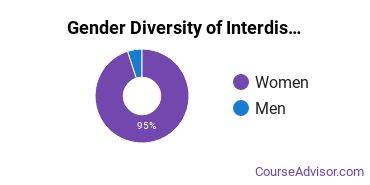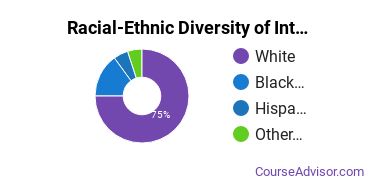Interdisciplinary Studies at SUNY Empire State College
SUNY Empire is located in Saratoga Springs, New York and has a total student population of 10,724.
Want to know more about the career opportunities in this field? Check out the Careers in Interdisciplinary Studies section at the bottom of this page.
SUNY Empire Interdisciplinary Studies Degrees Available
- Associate’s Degree in Interdisciplinary Studies
SUNY Empire Interdisciplinary Studies Rankings
Interdisciplinary Studies Student Demographics at SUNY Empire
Take a look at the following statistics related to the make-up of the interdisciplinary studies majors at SUNY Empire State College.
SUNY Empire Interdisciplinary Studies Associate’s Program

The following table and chart show the race/ethnicity for students who recently graduated from SUNY Empire State College with a associate's in interdisciplinary studies.

| Race/Ethnicity | Number of Students |
|---|---|
| Asian | 0 |
| Black or African American | 0 |
| Hispanic or Latino | 0 |
| White | 1 |
| International Students | 0 |
| Other Races/Ethnicities | 0 |
Concentrations Within Interdisciplinary Studies
Interdisciplinary Studies majors may want to concentrate their studies in one of these areas. The completion numbers here include all graduates who receive any type of degree in this field from SUNY Empire State College. Some of these focus areas may not be available for your degree level.
| Concentration | Annual Degrees Awarded |
|---|---|
| General Multi-/Interdisciplinary Studies | 33 |
Related Majors
References
*The racial-ethnic minorities count is calculated by taking the total number of students and subtracting white students, international students, and students whose race/ethnicity was unknown. This number is then divided by the total number of students at the school to obtain the racial-ethnic minorities percentage.
- College Factual
- National Center for Education Statistics
- O*NET Online
- Image Credit: By DanielPenfield under License
More about our data sources and methodologies.
